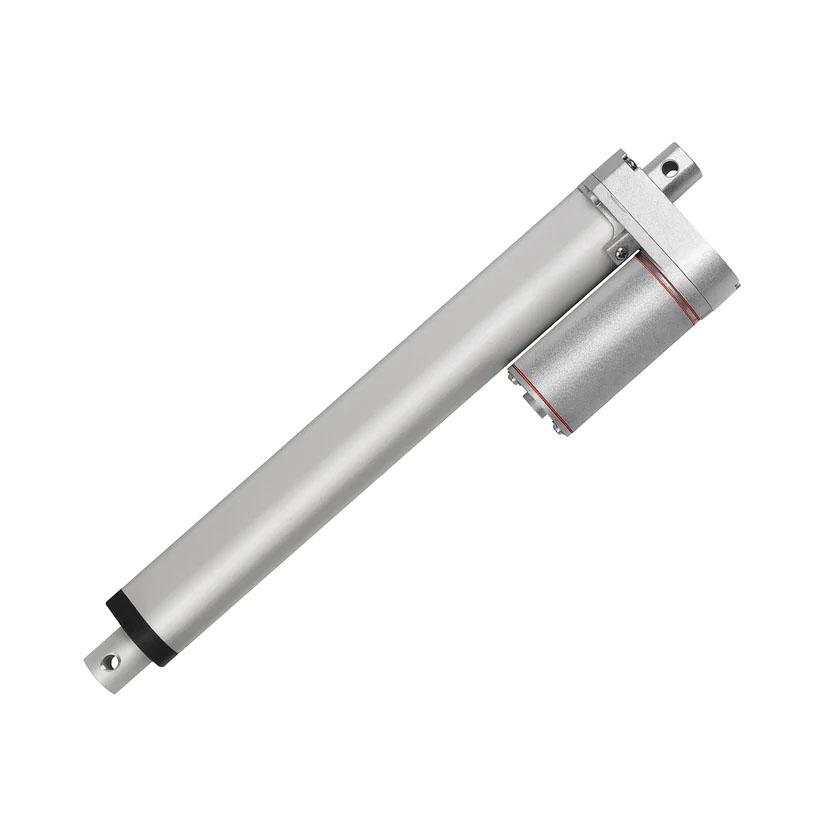Throughout history, mankind has continuously sought methods to simplify and automate daily tasks, leading to numerous mechanical innovations. The ancient world was filled with ingenious manual mechanisms, from the complex Antikythera mechanism to basic levers and pulleys. These rudimentary devices played a pivotal role in the day-to-day activities of past civilizations, laying the groundwork for the sophisticated tools we have today. As we transitioned into a technology-driven age, the quest for efficiency and precision led to the birth of linear actuators.
These devices, while perhaps not household names, have been instrumental in reshaping the landscape of automation and convenience. From heavy machinery to delicate medical equipment, linear actuators have found their niche, converting electrical energy into motion and proving their relevance in our modern world. As we delve deeper, we’ll explore what exactly a linear actuator is and how its intricate components collaborate to drive the world around us.
Principles of Linear Actuators
Linear actuators, at their core, are devices that create motion in a straight line. This is unlike rotary motors, which revolve in a circular motion. One of the advanced types in this category is a servo linear actuator, which offers enhanced precision and control. Here’s a deeper dive into the principles of linear actuators.
How they function
Linear actuators operate by converting energy, typically electrical, into linear motion. This is achieved through a motor that drives a rod or shaft in and out of its housing, thus generating movement.
Key components and design variations
Most linear actuators have common components including a motor (AC or DC), a screw assembly (which can be lead, ball, or acme type), and a nut. The choice of components and their design can vary based on the actuator’s intended function, load-bearing capacity, and desired speed. For instance, ball screw actuators might be preferred for applications requiring high precision, while lead screws could be chosen for durability and cost-effectiveness.
Differences between manual and automatic linear actuators
Manual linear actuators require human force for operation, using handles or levers to create motion. Automatic linear actuators, on the other hand, leverage energy sources, often electrical, to induce movement without human intervention. The automation aspect allows for increased efficiency, precision, and potential integration with smart control systems.
Daily Applications and Great Solutions for Home Automation
Linear actuators have paved the way for numerous advancements in home automation, offering homeowners unparalleled convenience, safety, and even luxury. Here are six notable applications:
Smart Windows
Gone are the days of manually cranking windows open. With linear actuators, homeowners can remotely control window openings, optimizing airflow and natural light entry. Some systems even sync with weather apps, automatically closing windows when rain is imminent.
Adjustable Beds
Beyond mere comfort, adjustable beds cater to health needs as well. With linear actuators, these beds can modify their elevation or angle, aiding in respiratory concerns, acid reflux, or even sleep apnea. They also offer personalized comfort settings, from zero-gravity positions to customized lounging angles.
Automated Cabinet Systems
Upper cabinets can now descend to countertop level with the press of a button, making kitchen items more accessible, especially for the elderly or those with mobility challenges. These cabinets, powered by linear actuators, merge functionality with a touch of luxury.
Retractable Roof Systems
Ideal for patios or conservatories, these roofs can open or close, enabling homeowners to enjoy the sky on clear nights or find shelter during unexpected downpours. Actuators ensure a smooth transition between the two states, creating adaptable living spaces.
Height-Adjustable Desks
Promoting ergonomics in home offices, these desks adjust to the user’s preferred height, whether sitting or standing. By using linear actuators, these desks cater to diverse postural needs, aiding in posture health and reducing sedentary habits.
Automated Pet Doors
Using sensors and actuators, these doors grant our furry friends the independence to come and go. Beyond convenience, they also offer security features, ensuring that only your pet, recognized through microchips or collar tags, can access the door.
Speaking about home automation, linear actuators are the silent heroes, transforming spaces into responsive environments that adapt to human and even pet needs.
Four Key Benefits of Automation
With the rise of technology and progress, automation stands out as a beacon of innovation, streamlining processes and redefining the way we approach tasks. Here are some key benefits:
Efficiency: Systems equipped with automated components often exhibit faster response times, leading to quicker task completion. This reduction in time lag not only accelerates processes but also optimizes resource usage.
Precision: Automation ensures tasks are carried out with enhanced accuracy. Whether it’s a machine cutting a component or software processing data, automated systems tend to be more consistent and precise, minimizing the room for discrepancies.
Safety: One of the unsung advantages of automation is the increased safety it brings. Automated systems can perform risky tasks, operate in hazardous environments, and consistently follow protocols, thereby drastically reducing the chances of errors and accidents.
Convenience: At a fundamental level, automation simplifies our daily routines. From smart homes adjusting to our preferences to factories producing goods round the clock, automation makes life more straightforward and tasks more accessible.
Environmental and Economic Impacts
Energy consumption: While automatic actuators can be more energy-efficient in their operations, reducing wastage and optimizing performance, it’s essential to assess them on a case-by-case basis.
Cost implications: Though the initial investment in automation can be substantial, the long-term benefits—such as reduced operational costs, increased output, and lower error rates—often justify the outlay.
Sustainability: Automation, when designed thoughtfully, can contribute to sustainability goals. Efficient systems lead to waste reduction, and many automated components are developed keeping recyclability in mind, signaling a step towards a greener future.
Transitioning from manual to automatic, linear actuators have revolutionized our daily operations, seamlessly embedding efficiency, precision, and convenience into the fabric of modern life.
